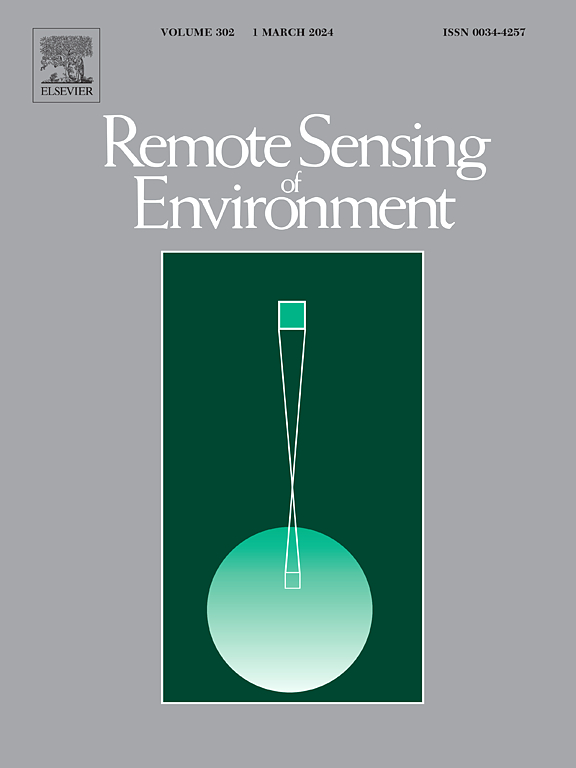估算土地覆盖和变化面积和地图精度的实用全球抽样方法
IF 11.1
1区 地球科学
Q1 ENVIRONMENTAL SCIENCES
引用次数: 0
摘要
数据存储和计算的最新进展,特别是基于云的处理,使得绘制全球土地覆盖和变化的地图相对快速和容易。通过对机器学习模型的选定参数进行各种调整,可以在几天内制作出多个版本的地图。然后需要基于样本的验证来建立这些地图原型与现实世界之间的对应关系,从而将它们从算法数据输出转化为具有量化误差的信息源。为面积估算和地图精度评估的目的而实施地理数据的全球概率抽样存在多重挑战,主要与这些地理数据的存储方式(坐标系统和投影)以及具体项目的目标有关。在这里,我们总结了全球采样的各种方法,旨在评估全球土地覆盖和变化图的准确性,并为目标土地覆盖类别产生无偏面积估计值以及与这些估计值相关的标准误差。我们提供了一组统一的估计器,通过明确地计算每个样本单元的面积,以及实现所提出方法所需的代码和技术细节,来适应各种抽样设计。虽然我们没有比较所提出的采样设计选项的相对精度,但我们的目的是帮助从业者选择合适的采样设计和估算器,以满足他们特定的数据格式和项目目标,并促进正确的实施,提高全球采样方法在土地覆盖制图界的可重复性。本文章由计算机程序翻译,如有差异,请以英文原文为准。
Practical global sampling methods for estimating area and map accuracy of land cover and change
Recent advancements in data storage and computing, particularly cloud-based processing, enable mapping global land cover and change relatively quickly and easily. Multiple versions of a map could be produced within a matter of days with various adjustments of selected parameters of machine learning models. Sample-based validation is then required to establish correspondence between these map prototypes and the real world, thus turning them from algorithm data outputs into sources of information with quantified errors. Implementing global probability sampling of geographic data for the purposes of area estimation and map accuracy assessment presents multiple challenges, primarily linked to the way these geographic data are stored (coordinate systems and projections) and the objectives of the specific project. Here we summarize various approaches to global sampling aimed at assessing accuracy of global land cover and change maps and producing unbiased estimators of area along with the standard errors associated with these estimates for the target land cover classes. We provide a unified set of estimators that accommodate a variety of sampling designs by explicitly accounting for the area of each sample unit, as well as code and technical details necessary to implement the presented methods. While we do not compare relative precision of the presented sampling design options, our aim is to help practitioners select an appropriate sampling design and estimators for their specific data format and project objectives, and to facilitate the correct implementation and increased reproducibility of global sampling methods within the land cover mapping community.
求助全文
通过发布文献求助,成功后即可免费获取论文全文。
去求助
来源期刊

Remote Sensing of Environment
环境科学-成像科学与照相技术
CiteScore
25.10
自引率
8.90%
发文量
455
审稿时长
53 days
期刊介绍:
Remote Sensing of Environment (RSE) serves the Earth observation community by disseminating results on the theory, science, applications, and technology that contribute to advancing the field of remote sensing. With a thoroughly interdisciplinary approach, RSE encompasses terrestrial, oceanic, and atmospheric sensing.
The journal emphasizes biophysical and quantitative approaches to remote sensing at local to global scales, covering a diverse range of applications and techniques.
RSE serves as a vital platform for the exchange of knowledge and advancements in the dynamic field of remote sensing.
 求助内容:
求助内容: 应助结果提醒方式:
应助结果提醒方式:


